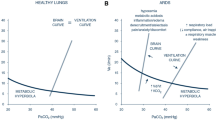Abstract
Proper understanding of the mechanisms involved in heart rate turbulence (HRT) may offer anexplanation of why it is such a potent postinfarction risk stratifier. This article reviews the physiologicalbackground of ventriculophasic sinus arrhythmia—a phenomenon which shares some underlying physiologicalfeatures with HRT including cardiac autonomic regulation. It is now believed that HRT is principally triggeredby a transient loss of vagal efferent activity in response to the missed baroreflex afferent input due toventricular premature beat-induced haemodynamically inefficient ventricular contraction. Studies are summarizedwhich support more or less directly this hypothesis. The physiology of early acceleration and late decelerationof heart rate after a ventricular premature beat is discussed. Qualitatively different but otherwisequantitatively uniform postectopic dynamics of systolic blood pressure after ventricular premature beats isdemonstrated in subjects with normal and abnormal left ventricular function. It is concluded that the slope oflate deceleration of heart rate after ventricular premature beats can serve as a reasonable surrogate forbaroreflex sensitivity.
Similar content being viewed by others
References
Schmidt G, Malik M, Barthel P, Schneider R, Ulm K, Rolnitzky L, Camm AJ, Bigger JT, Sch¨omig A. Heart-rate turbulence after ventricular premature beats as a predictor of mortality after acute myocardial infarction. Lancet 1999;353:1390–1396.
Erlanger J, Blackman JR. Further studies in the physiology of heart block in mammals. Chronic auriculo-ventricular heart-block in the dog. Heart1909;1:177.
Hecht AF. DeDas Morgagni-Adams-Stokes syndrome in Kindesalter und seine Behandlung. DeWien med Wchschr 1914;64:178.
Chung EK, Jewson DV. Ventriculophasic sinus arrhythmia in the presence of artificial pacemaker induced ventricular rhythm. Cardiology 1970;55; 65–68.
Wilson FN, Robinson GC. I. Two cases of complete heart-block showing unusual features. Arch Int Med 1918;21:166.
Parsonnet AE, Miller R, Newark NJ. Heart block. The influence of ventricular systole upon the auricular rhythm in complete and incomplete heart block. Am Heart J 1944;27:676–687.
Roth IR, Kisch B. The mechanism of irregular sinus rhythm in auriculoventricular heart block. Am Heart J 1948;36:257–276.
Jedlicka J, Martin P. Time course of vagal effects studied in clinical electrocardiograms. Eur Heart J1987;8:762–772.
Rosenbaum MB, Lepeschkin E. The effect of ventricular systole on auricular rhythm in auriculoventricular block. Circulation 1955;11:240–261.
Bevegard S, Johsson B Karlof I. The instaneous effect of aortic pressure on atrial rate in complete atriventricular block. Acta Med Scand1967;472(Suppl):54–58.
Hainsworth R. Physiology of the cardiac autonomic system. In: Malik M(ed). Clinical Guide to Cardiac Autonomic Tests. Dordrecht: Kluwer Academic Publishers, 1998;3–28.
Kappagoda CT, Linden RJ, Sanders DA. The effect on heart rate of distending the atrial appendages in the dog. J Physiol 1972;225:705–719.
Kappagoda CT, Linden RJ, Snow HM. A reflex increase in heart rate from distension of junction between the superior vena cava and the right atrium. J Physiol 1972;220:177–197.
Brooks CMcC, Hsin-Hsiang L, Lange G, Mangi R, Shaw RB, Geoly K. Effects of localised stretch of the sinoatrial node region of the dog heart. Am J Physiol 1966;211(5):1197–1202.
Lange G, Hsin-Hsiang L, Chang A, Brooks CMcC. Effect of stretch on the isolated cat sinoatrial node. Am J Physiol 1966;211(5):1192–1196.
Blinks JR. Positive chronotropic effect of increasing right atrial pressure in the isolated mammalian heart. Am J Physiol 1956;186:299–303.
Pathak CL. Effects of changes in intraluminal pressure on inotropic and chronotropic responses of isolated mammalian hearts. Am J Physiol1958;194(I):197–199.
Hashimoto K, Tanaka S, Hirata M, Chiba S. Responses of the sino-atrial node to change in pressure in the sinus node artery. Circ Res 1967;21: 297–304.
Döhlemann C, Murawski P, Theissen K, Haider M, Förster C, Pöppl SJ. Ventrikulophasische Sinusarrhytmie bei ventrikulärer Extrasystolie. Z Kardiol1979;68:557–565.
Schmidt G. Heart rate turbulence. In: Malik M(ed). Risk of Arrhythmia and Sudden Death.London: BMJ Books, 2001;242–248.
Ghuran A, Schmidt G, La Rovere M, Schwartz PJ, Bigger Jr JT, Camm AJ, Malik M. Pathophysiologic correlate of heart rate turbulence and baroreceptor reflex sensitivity from the ATRAMI study. Eur Heart J 2000;21(Suppl):333 (abstract).
Bauer A, Barthel P, Schneider R, Malik M, Schmidt G. Impact of coupling interval on heart rate turbulence. Eur Heart J 2001;22(Suppl.):438 (abstract).
Mrowka R, Persson PB, Theres H, Patzak A. Blunted arterial baroreflex cause “pathological” heart rate turbulence. Am J Physiol2000;279:R1171–R1175.
Davies LC, Francis DP, Ponikowski P, Piepoli MF, Coats AJS. Relation of heart rate and blood pressure turbulence following premature ventricular complexes to baroreflex sensitivity in chronic congestive heart failure. Am J Cardiol 2001;87: 737–742.
Guettler N, Vukajlovic D, Berkowitsch A, Schulte B, Erdogan A, Carlsson J, Neuzner J, Pitschner HF. Effect of vagus blockade with atropine on heart-rate turbulence. Pacing Clin Electrophysiol 2001;24(4) Part II:625.
Malik M, Wichterle D, Schmidt G. Heart rate turbulence. G Ital Cardiol 1999;29(Suppl 5):65–69.
Roach D, Koshman ML, Sheldon R. Turbulence: A focal, inducible, source of heart period variability associated with induced, transient hypertension. Pacing Clin Electrophysiol 2000;23(4) Part II:709.
Welch WJ, Smith ML, Rea FM, Bauernfeid RA, Eckberg DL. Enhancement of sympathetic nerve activity by single premature ventricular beats in humans. J Am Coll Cardiol 1989;3:69–75.
Smith ML, Ellenbogen KA, Eckberg DL. Baseline arterial pressure affects sympathoexcitatory responses to ventricular premature beats. Am J Physiol 1995;269:H153–H159.
Lombardi F, Ruscone TG, Malliani A. Premature ventricular contractions and reflex sympathetic activation in cats. Cardiovasc Res 1989;23: 205–212.
Herre JM, Thames MD. Responses of sympathetic nerves to programmed ventricular stimulation. J Am Coll Cardiol 1987;9:147–153.
Seed WA, Noble MI, Walker JM, Miller GAH, Pidgeon J, Redwood D, Walness R, Franz MR, Schoettler M, Schaefer J. Relationships between beat-to-beat interval and the strength of contraction in the healthy and diseased human heart. Circulation 1984;70:799–805.
Sung ChS, Mathur VS, Garcia E, Castro CM, Hall RJ. Is postextrasytolic potentiation dependent on starling's law? Circulation 1980;62:1032–1035.
Author information
Authors and Affiliations
Rights and permissions
About this article
Cite this article
Wichterle, D., Melenovsky, V. & Malik, M. Mechanisms Involved in Heart Rate Turbulence. Card Electrophysiol Rev 6, 262–266 (2002). https://doi.org/10.1023/A:1016385126668
Issue Date:
DOI: https://doi.org/10.1023/A:1016385126668




